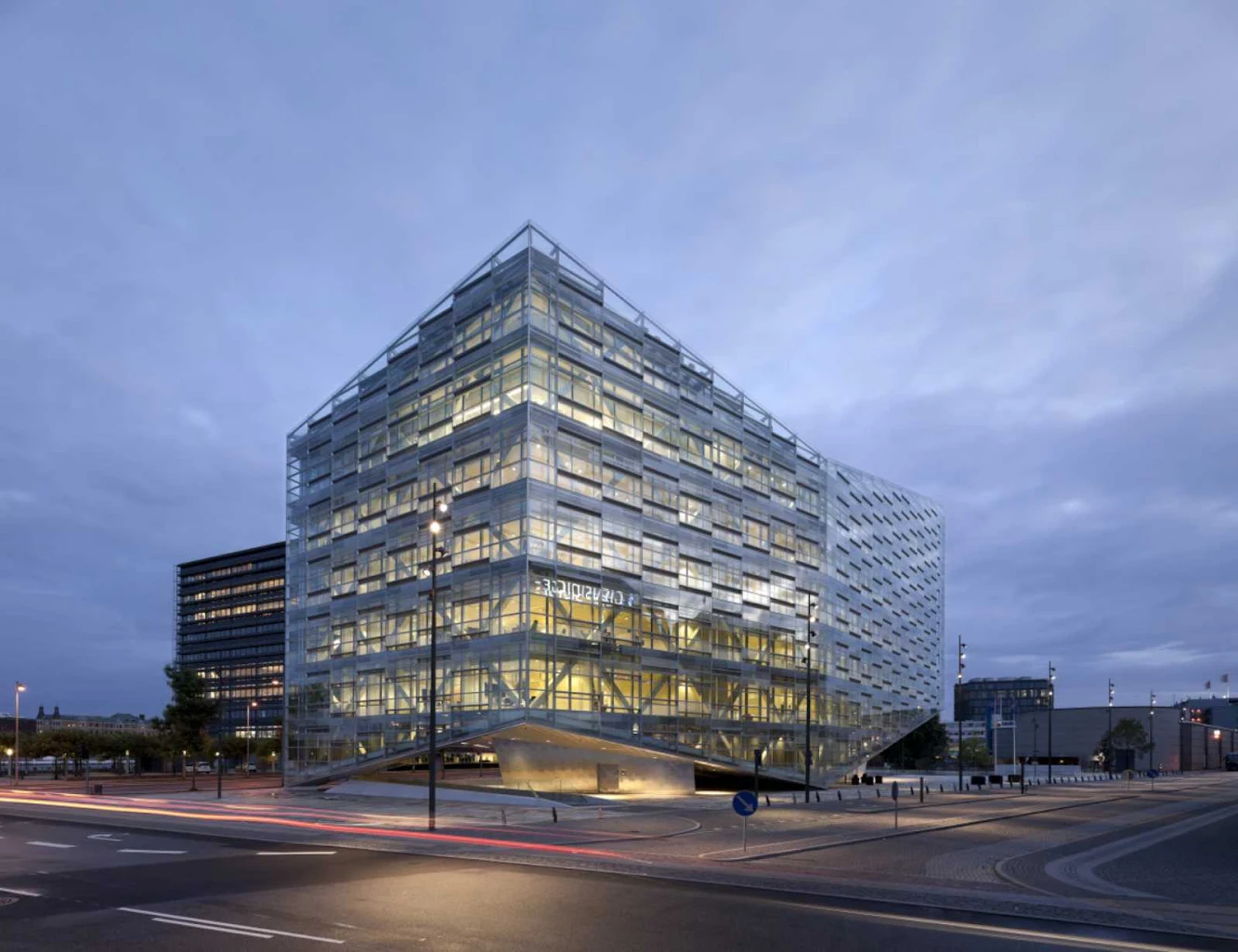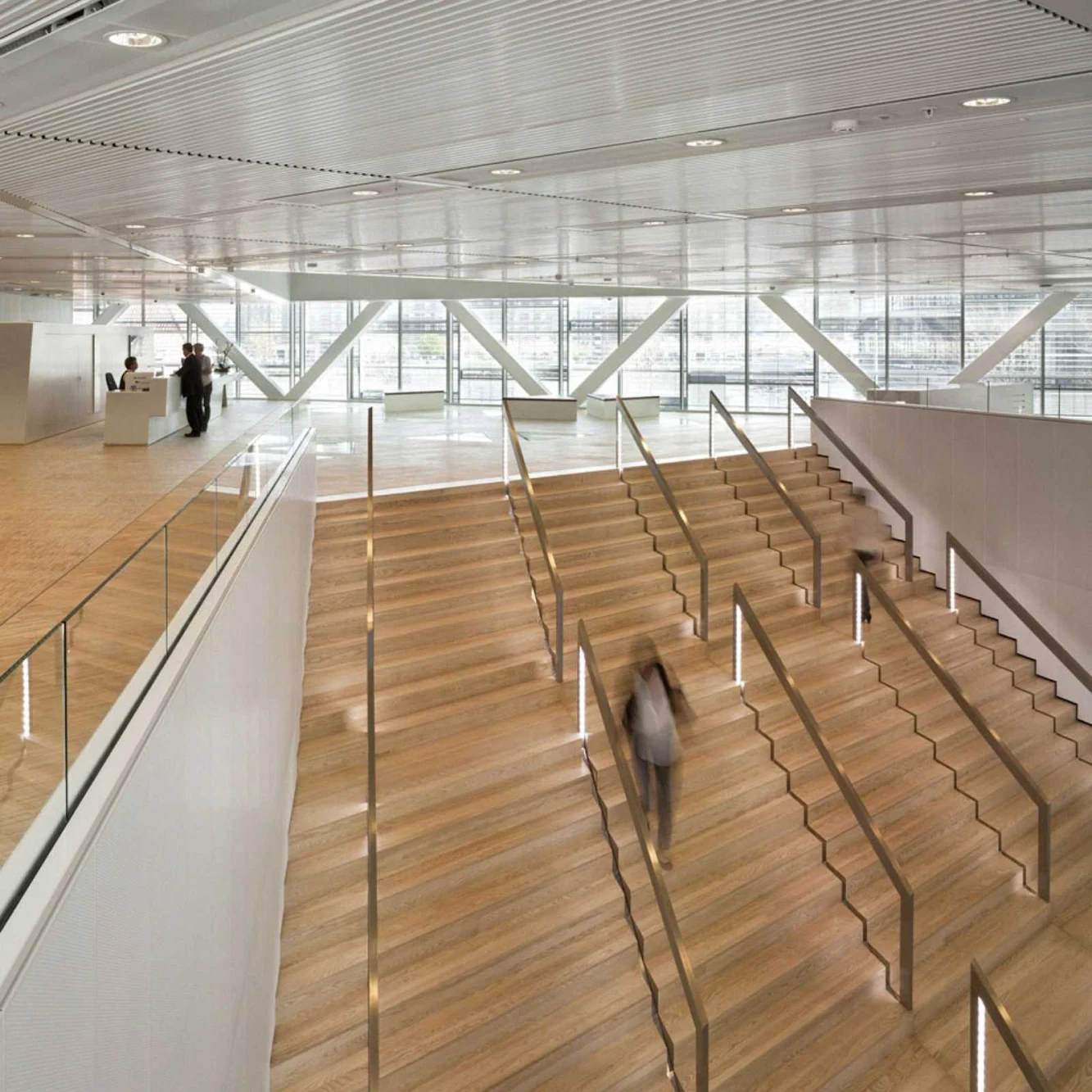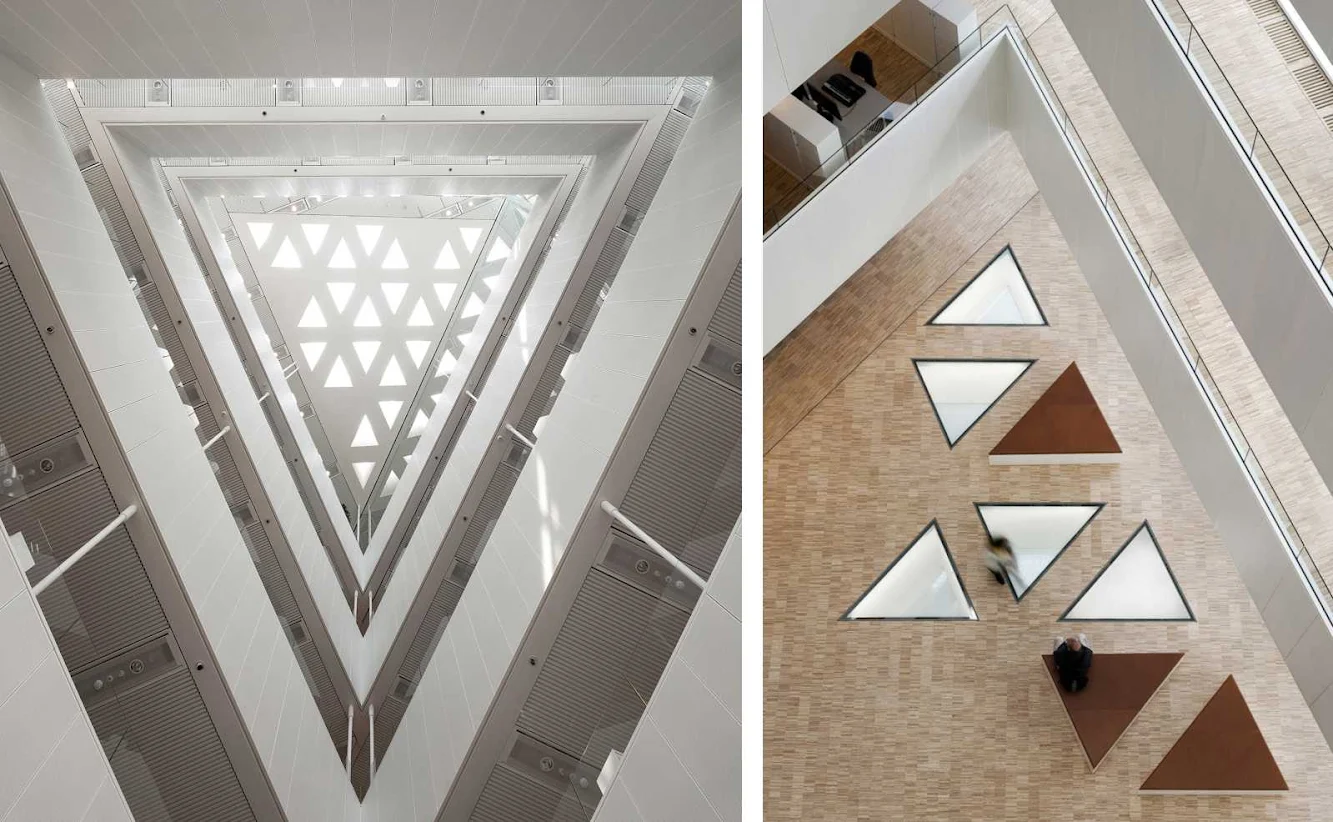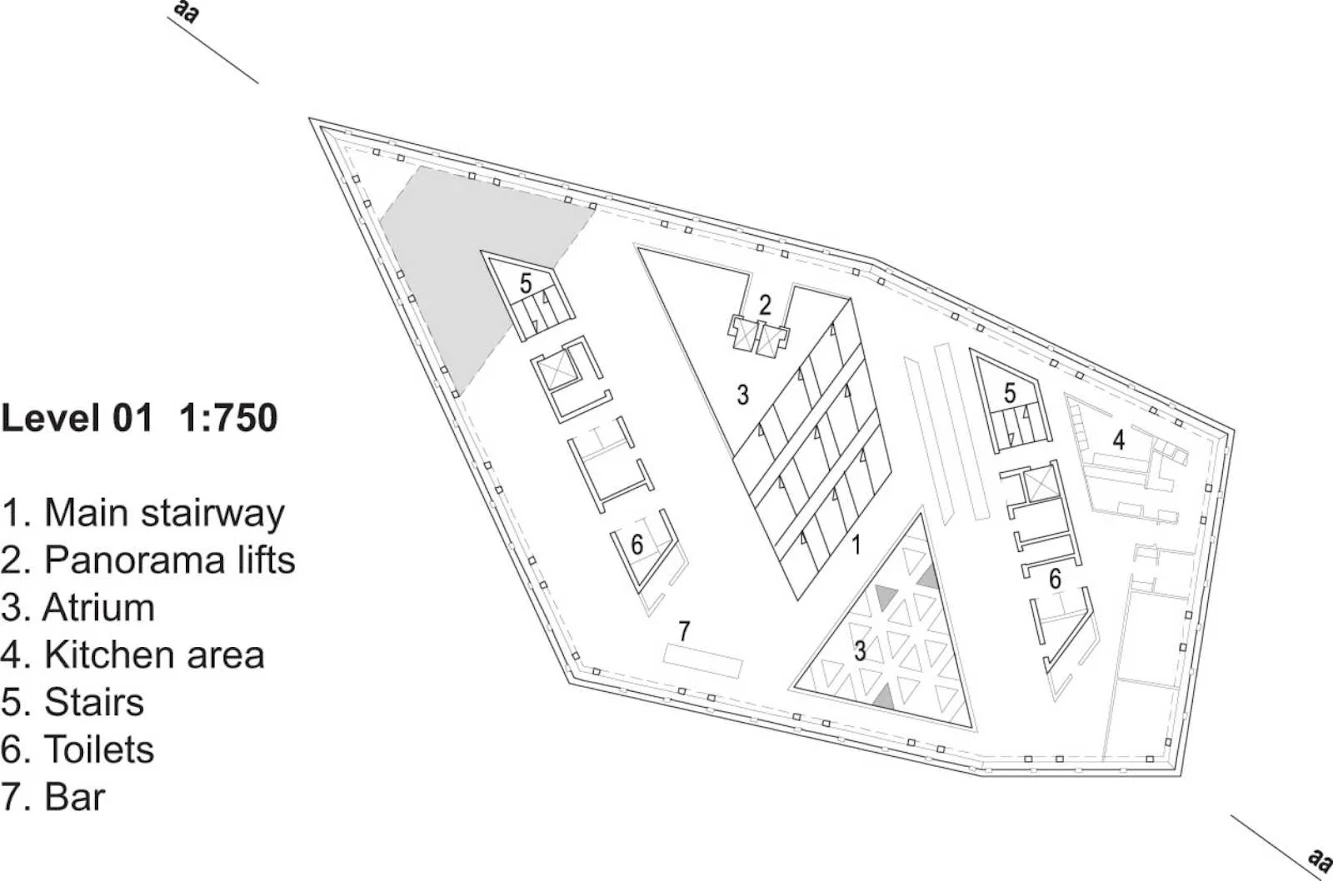
The new extension to to the financial institution Nykredit consists of a new building, the Crystal, sited northwest of the existing headquarters, called the Glass Cube, on the edge of the new waterfront and the historic Copenhagen.

Freestanding on the site, it reads as a transparent, geometrical, glazed form which, resting only on a single point and a single line, floats as a visually light, crystalline structure above the plaza. the piazza features a large water pool which reflects the sun and the clouds moving across the sky.

The Crystal is designed to interact with their surroundings, offering a subtle connection between the formal architecture of the Glyptotek Museum of Ancient and Modern Art, and the waterfront area which forms the setting for the new building. in terms of both form and scale, the building is intermediate between the city and the harbour, and harmonises with neighbouring buildings.

On the southern side, it rises with reference to the gable apex of the “Elephant House” and creates space for the main entrance. From the corner of Puggardsgade and Hambrosgade, the passage under the building allows a clear view towards Nykredit’s head office building and the harbour. the interior of the building complies with the demands for functionality, flexibility and efficiency.

The typical floor plan is disposed in a Z-shape around two atria, ensuring that all workstations are well lit and enjoy a view. the disposition of the plan allows the accommodation of an open plan, separate offices or meeting rooms. the building’s multi-faceted glass façade reflects both daylight and the immediate surroundings, but the double-glazing also features an integrated sun screen that allows the building to adapt to changing light conditions.

In addition, the outer glazing system includes a subtle silk print design that both mitigates solar ingress and will also enliven the ambience of the harbour area. the large three-dimensional steel structure constituting the building’s constructive system functions as an architectural element while at the same time freeing the building of columns, creating maximum flexibility in the office spaces.

Energy: the design team has brought a holistic approach to the environmental strategy underlying the project. the scheme manages to combine a completely transparent office building with an exceptionally low energy-consumption at 70 kWh per square metre, which means that the building consumes 25 per cent less energy than the requirements of the existing energy legislation.

The roof is covered with highly efficient photovoltaic panels generating 80, 000 kWh per year. in addition, the triple-layered inner glass façade provides extremely effective thermal insulation, with a U-value of only 0. 7 Wh per square metre.

Water: Rainwater run-off is collected and used as grey water for toilet facilities throughout the building, while sea water provides additional cooling for the building. Ventilation: the scheme operates a night-time cooling strategy where natural ventilation is introduced through the double façade and extracted through the atrium skylights, maintaining optimum internal temperatures.

Context: the building floats above the plaza resting only on a single point and a single line, and it is carefully harmonised with the neighbouring buildings. the additional public space at ground level creates a dynamic public realm. Daylight: the highly transparent building with a subtle silk-printed design on the outer glass façade functioning as a sunscreen creates a harmonious and versatile working environment for all employees. Noise: the building’s insulated façade prevents noise interference from the traffic outside.






Location: Copenhagen, Denmark Architects: Schmidt Hammer Lassen Architects Landscape: SLA Engineer: Grontmij I Carl Bro A/S, Buro Happold Area: 6,850 sqm Year: 2010 Client: Nykredit Photographs: Adam Mørk